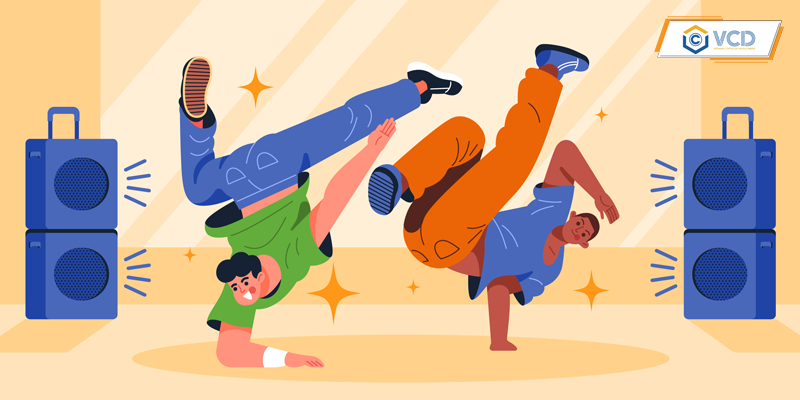Music Copyright in Dance Centers
The issue of copyright related to the use of music in dance and exercise classes is very popular today. Dance centers often choose new and popular songs to choreograph movements, to create a vibrant and exciting atmosphere for students. Music is not only the foundation for exercises but also a decisive factor in attracting customers, encouraging them to invest in the center’s services. So is the use of music like that a violation of copyright? Please follow the article of VCD below.
1. What is music copyright in dance centers?
Copyright is the author’s right to the works they create, protected from the moment the work is created. This right includes the right to manage, use, and exploit the value of the work. Other individuals or organizations are not allowed to infringe on these rights without the author’s consent. Copyright protects authors’ rights and prevents unauthorized copying and use of their works.
Music is one of the optimal and indispensable sources of entertainment for humans. Dance centers use music for many purposes to enhance the quality of teaching and the learning experience of students. Music creates a vibrant atmosphere, helping students focus and immerse themselves in the lesson. Music with clear rhythms supports movement instructions and practicing rhythmic and coordination skills. It also enhances concentration, inspiration, and motivation, helping students overcome difficulties. Finally, music encourages creativity, allowing students to develop unique and individual dance moves.
Accordingly, Music Copyright in dance centers is a legal right to protect the use of musical works in the teaching and performance process. This right includes the intellectual property rights of authors and producers of songs, music, and melodies, ensuring that the use of these works must be done with the consent and legal license from copyright management organizations.

2. Legal regulations on music copyright in dance centers
Dance centers use music for many different purposes, especially often using “hit” songs in choreography, creating a modern and dynamic feeling. This gives the center a good impression to students that the center is always updated with trends to create excitement for students. However, the use of new popular songs will also come with some copyright violations that the centers often do not pay attention to.
According to Article 14 of the Law on Intellectual Property, the concept of musical works is defined as follows: a musical work is a work expressed in the form of notes in a musical score or other musical symbols or shaped on a recording or video recording with or without lyrics, regardless of whether it is performed or not, and is one of the objects protected by copyright and the performer of that work is protected by related rights.
- Accordingly, if you want to use musical works, you must have the permission of the author or copyright owner, except for some cases specified in Article 25 of the Law on Intellectual Property:
- Self-copying a copy for scientific research or teaching.
- Performing the work in cultural activities, propaganda, and agitation without collecting money in any form.
- Converting the work into Braille or other languages for the visually impaired.
- There are cases where you do not have to pay remuneration, and there are cases where you have to pay remuneration and royalties to the author or copyright owner. However, in any case, the use of musical works must be noted:
- Must not affect the normal exploitation of the song.
- Must not harm the rights of that work’s author or copyright owner.
- The full name of the author, as well as the origin and source of the musical work, must be stated.
Dance centers that use songs to attract customers and encourage them to spend money on their services are considered a form of paid propaganda. In legal terms, this collection of money is understood as using the work for commercial purposes, so the use of musical works by dance centers to attract customers and generate profits is a commercial activity. Thus, dance centers that use musical works to attract customers and encourage them to spend money on their services must ask for permission and pay royalties, remuneration, and other material benefits to the copyright owner. This not only ensures compliance with the law but also shows respect for the creative efforts of artists and authors.
Failure to comply with copyright can result in serious legal consequences for dance centers, including heavy fines, lawsuits from copyright owners, and requests to stop using infringing music. Violations can also result in loss of reputation, economic loss due to compensation, and restrictions on the center’s operations. Therefore, compliance with copyright regulations is very important to protect the center’s rights and reputation.
Although there are currently regulations on copyright for musical works, these regulations are not specific and clear enough, making them difficult to apply and difficult to access. Therefore, VCD sees the need for more detailed guidance documents to help people better understand the provisions of the law and how to apply them more effectively. This will facilitate dance centers and related organizations in complying with the law and protecting the rights of authors.
